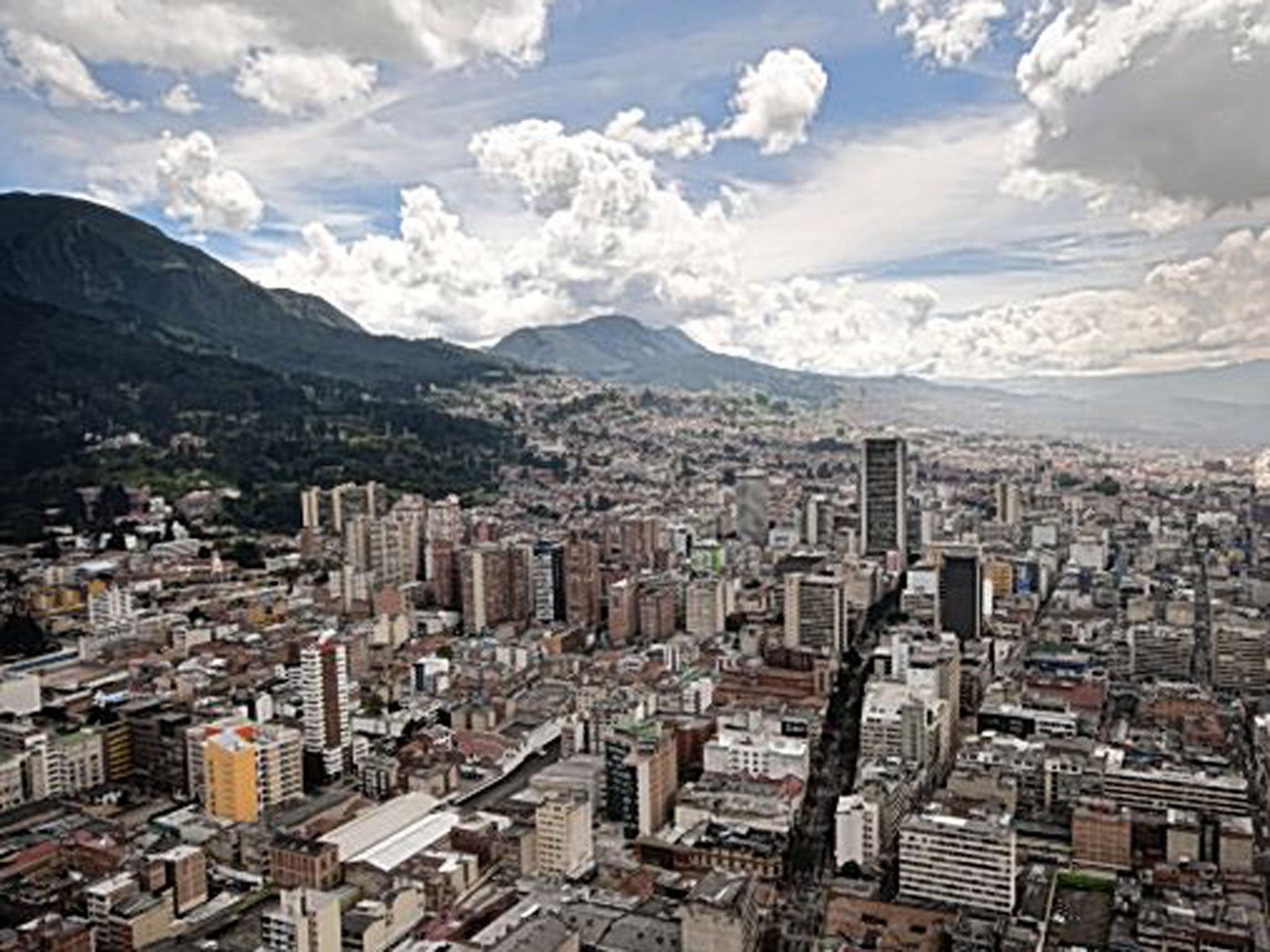Simon Calder: Things go better with Colombian flights
The man who pays his way

"Beyond El Dorado" is the name of the superb exhibition at the British Museum, subtitled "Power and gold in ancient Colombia". It explores the legends of lost cities and gilt-clad demi-gods through the medium of the exquisite gold figures created before the Europeans arrived. You have six more weeks to see it, before the Museo del Oro in the capital, Bogota, demands its baubles back. Happily, if you miss the 23 March deadline, you can make a summer visit after the gold rush. None other than Nick Clegg, the Deputy Prime Minister (of Britain, not Colombia) announced this week that Bogota is returning to the UK's flight schedules. So you can see the priceless collection (which actually belongs to the Banco de la República) in situ.
El Dorado, "The Golden One", is the world's best airport name. That is not the same thing as the name of the world's best airport. Indeed, after half-a-dozen transits through Colombia's aviation hub, I concluded that the short form, BOG, is appropriate for this scruffy and disorganised airport. But Bogota is the gateway to a captivating country of mountains, jungles, colonial towns and powder-white beaches, as well as offering the most favourable fares elsewhere in Latin America. The national airline, Avianca, abandoned the UK in 2001; perhaps the deals it cut were too favourable. Yet after 13 unlucky years, the carrier returns to Heathrow in July.
Anyone heading for South or Central America can expect immediate benefits. Historically, the best fares to destinations as diverse as Panama City and Buenos Aires have been offered by the nations of northern South America (if you see what I mean). Until the Venezuelan airline, Viasa, went bust 18 years ago, flying down to Rio or up to Havana was most economically achieved by changing planes at Caracas, after an interminable flight from Heathrow via Paris and Margarita Island.
10 best South America travel books
Show all 10After Viasa's collapse, Avianca took up the slack. Anyone with a nose for a good fare could assume that Colombia's national airline would be the cheapest, if not the fastest. Initially, passengers were routed via a connecting flight to Paris on Dan-Air (yes, this was some time ago). This led to some interesting journeys. With my very first ticket on the Colombian airline, I was aiming for Georgetown in Guyana. I flew on practically every carrier in the world apart from Avianca. The outbound flight landed at the wrong airport in the French capital, which meant I missed the Avianca connection with some style and spent the night stationary in the Orly Holiday Inn rather than crossing the Atlantic at 500mph. Next morning, I caught a bus to the right airport, Charles de Gaulle, and presented myself at the Dan-Air desk to see what they might provide. I could get back on schedule, I told the Dan-Air staff, if only I were assigned a seat on the Air France Concorde to New York with a connection to Guyana Airways.
They snorted at the very suggestion – no such supersonic luck. Sniffily, I was packed back to Gatwick on Dan-Air, flew to Newark on Virgin Atlantic, onwards on American Airlines to San Juan in Puerto Rico, then to Port of Spain in Trinidad. After another night at an airport, I flew LIAT to Barbados and on to Georgetown. None of which, of course, was Avianca's fault. The return flight worked fine, with such generous time allowed on the ground at Madrid that it was possible to go shopping – not merely in the transit zone, but by going through passport control, out of the airport and over to the nearby village of Barajas.
When direct flights to Heathrow began on Avianca, the homeward experience was equally interesting – because the ladies and gentlemen from HM Customs & Excise had the look of people who had been expecting you.
Passengers from Bogota often found themselves in the unusual position of having to provide identification simply to be allowed off the flight. Luggage took an age to reach the carousel in Terminal 2, because the sniffer dogs belonging to Customs were running all over the bags. On one occasion, shortly before Avianca stopped flying to Heathrow, I arrived from Bogota with some (innocuous) goods to declare. The red channel was unstaffed – because, I was told: "Everyone is watching your flight."
Can you see for miles?
Avianca is the oldest airline in the Western Hemisphere, having been launched (as Colombian-German Airlines) in December 1919, shortly after KLM of Holland. For 95 years it has flown over some of the most challenging terrain in the world. Even so, Avianca has not had a fatal crash since 1990, when a Boeing 707 from Medellín to New York's JFK airport ran out of fuel after more than an hour of holding and a missed approach.
Yet I wonder how much thought has gone into the airline's frequent-flyer scheme? In the unlikely event that I were put in charge of choosing the name of an aviation loyalty currency, I would not call it "LifeMiles". But Avianca does.
The airline's invitation to its frequent travellers to "Learn how much time you have before your LifeMiles expire" may strike you as slightly menacing.
Shazam: it's Kazan
Heathrow to Bogota may be the most welcome new route of the week, but it is not the weirdest. That prize, once again, goes to Vueling – the low-cost airline that belongs to British Airways' parent company, IAG. A reliable Tartar source reveals that beautiful Barcelona will soon be joined, twice a week, with Kazan, capital of the Russian Republic of Tatarstan.
Subscribe to Independent Premium to bookmark this article
Want to bookmark your favourite articles and stories to read or reference later? Start your Independent Premium subscription today.

Join our commenting forum
Join thought-provoking conversations, follow other Independent readers and see their replies